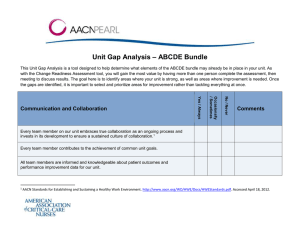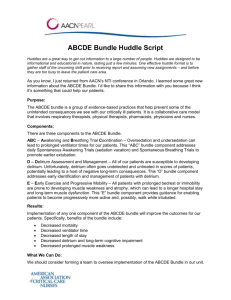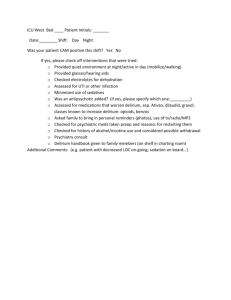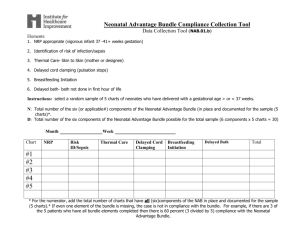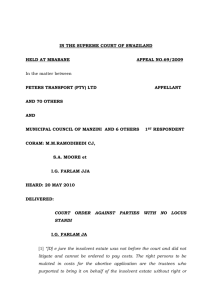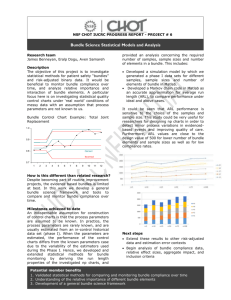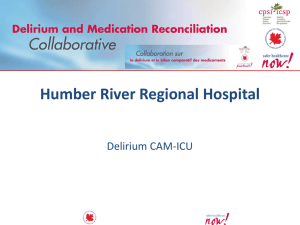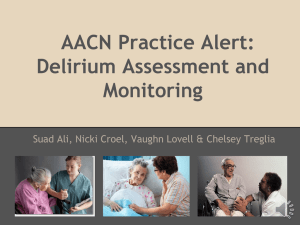ABCDE Bundle Newsletter Article - American Association of Critical
advertisement
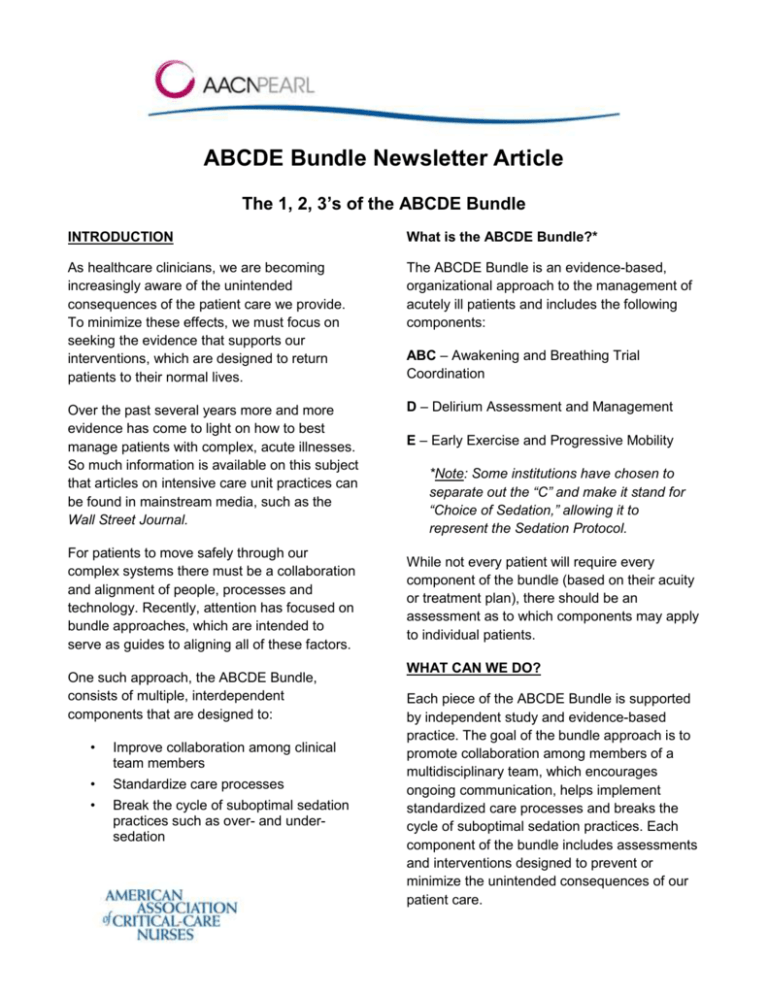
ABCDE Bundle Newsletter Article The 1, 2, 3’s of the ABCDE Bundle INTRODUCTION What is the ABCDE Bundle?* As healthcare clinicians, we are becoming increasingly aware of the unintended consequences of the patient care we provide. To minimize these effects, we must focus on seeking the evidence that supports our interventions, which are designed to return patients to their normal lives. The ABCDE Bundle is an evidence-based, organizational approach to the management of acutely ill patients and includes the following components: Over the past several years more and more evidence has come to light on how to best manage patients with complex, acute illnesses. So much information is available on this subject that articles on intensive care unit practices can be found in mainstream media, such as the Wall Street Journal. D – Delirium Assessment and Management For patients to move safely through our complex systems there must be a collaboration and alignment of people, processes and technology. Recently, attention has focused on bundle approaches, which are intended to serve as guides to aligning all of these factors. One such approach, the ABCDE Bundle, consists of multiple, interdependent components that are designed to: • • • Improve collaboration among clinical team members Standardize care processes Break the cycle of suboptimal sedation practices such as over- and undersedation ABC – Awakening and Breathing Trial Coordination E – Early Exercise and Progressive Mobility *Note: Some institutions have chosen to separate out the “C” and make it stand for “Choice of Sedation,” allowing it to represent the Sedation Protocol. While not every patient will require every component of the bundle (based on their acuity or treatment plan), there should be an assessment as to which components may apply to individual patients. WHAT CAN WE DO? Each piece of the ABCDE Bundle is supported by independent study and evidence-based practice. The goal of the bundle approach is to promote collaboration among members of a multidisciplinary team, which encourages ongoing communication, helps implement standardized care processes and breaks the cycle of suboptimal sedation practices. Each component of the bundle includes assessments and interventions designed to prevent or minimize the unintended consequences of our patient care. ABCDE BUNDLE COMPONENTS Awake and Breathing Trial Coordination The ABC component of the bundle is a collaborative approach to administering the appropriate type and amount of sedation, safely allowing the patient to wake up daily and safely evaluating the patient’s ability to breathe independent of the ventilator. This requires collaboration between physicians, nurses, respiratory therapists and pharmacists. Even non-ventilated patients receiving sedation will benefit from some of the elements of this bundle. Delirium Assessment and Management The D component of the bundle is concerned with assessing for and managing delirium. What used to be thought of as “ICU psychosis” is now known to be delirium. This element involves a process to monitor for the presence of delirium on a daily basis. First, the presence of pain and agitation must be addressed. Valid, reliable and quick assessment tools are necessary. Once delirium is detected, managing it is vital. While no single drug is the “magic bullet” for minimizing the effects of delirium, research continues to identify the most effective management strategies – pharmacologic and non-pharmacologic. All patients should be assessed for the presence of delirium. Early Exercise and Progressive Mobility The final component of the bundle involves getting patients moving earlier. This incorporates everything from passive and active range of motion to ambulation. As with the spontaneous awakening and spontaneous breathing trials (SATs and SBTs), a safety screening is performed to determine the patient’s readiness for increased activity. Whether the patient is in the critical care unit or on a progressive care unit, safely mobilizing patients will improve their outcomes. All patients should be evaluated and assessed for progressive mobility needs. IMPLEMENTATION Tools and algorithms are available for each of the bundle components. Through the collaboration of a multidisciplinary team, care process can be standardized and patients will experience both fewer unintended consequences and improved outcomes. Tools The ABCDE bundle contains easy-to-use algorithms for SATs, SBTs, delirium assessment and management, and ICU mobility. All of the tools can be customized to the specific needs of your institution. Documentation and communication are vital to understanding how a patient is fairing in the ICU environment on a day-to-day basis, evaluating patient readiness to advance and assisting the team in making decisions about how best to manage the patient. Utilizing a daily goal sheet for each patient may help facilitate communication between multidisciplinary team members. Additional Resources AACN Practice Alert – Delirium Assessment and Management http://www.aacn.org/WD/practice/content/practi cealerts/delirium-practice-alert.content ICU Delirium: www.icudelirium.org Institute for Healthcare Improvement http://www.ihi.org/explore/Bundles/Pages/defaul t.aspx
